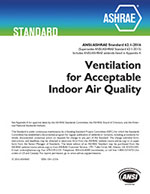 Educational facilities, or public and private institutions devoted to teaching students, differ in physical size and level of education programs. These institutions can range from preschool to university levels, all of which need proper heating, ventilation, and air conditioning (HVAC) systems and indoor air quality.
Educational facilities, or public and private institutions devoted to teaching students, differ in physical size and level of education programs. These institutions can range from preschool to university levels, all of which need proper heating, ventilation, and air conditioning (HVAC) systems and indoor air quality.
While indoor air quality (IAQ) is important for everyone’s health, it is especially important for young children that are still developing their lungs. The United States Environmental Protection Agency (EPA) Science Advisory Board has completed multiple school studies that show indoor air pollution among the top five environmental risks to public health. Continue reading “Importance of Sensor Stability in Educational Facilities”


 ASHRAE 62.1
ASHRAE 62.1
